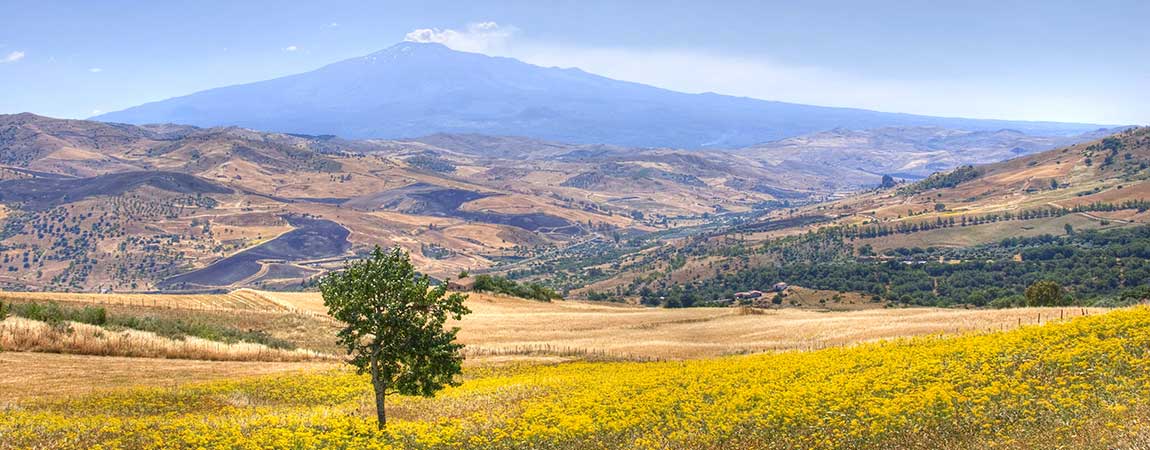
Sicily is a land with a truly priceless artistic and historical heritage, kept in its large cities and small villages where it seems that time has stopped. Troina is certainly among the latter, a jewel located 62 km from Enna, right in the heart of the beautiful Nebrodi Park, at an altitude of 1121 m, between the San Pantheon and Muganà mountains.
Troina, also called “the balcony of Sicily“, dominates a territory made up of luxuriant woods, much loved by King William and Count Ruggero d'Altavilla: not far away is the course of the Troina river, whose dam gave birth to the artificial lake of Ancipa.
Discovering the village of Troina
It is said that Troina is actually the ancient one Imachera built by giants or that instead it was built on the site of a temple dedicated to the cult of the Two Mothers. Certainly the area has seen the presence of man since time immemorial, in the light of the remains of a Neolithic necropolis on Mount Muganà: first the Sicani and then the Sicels arrived, up to the Greeks and Romans, for whom Troina was an important military stronghold. Conquered by the Saracens, the town reached its maximum splendor with the Normans: Ruggero d'Altavilla, having driven out the Arabs, he chose Troina as his own stronghold, making it at the same time a meeting place for poets, scientists and writers of all origins (Latins, Jews, Arabs, Normans and Byzantines), making its court open and multicultural.
Today Troina is a pretty and peaceful village, with cobbled alleys overlooked by stone houses, stairways and dark arches, in a rarefied atmosphere that to many reminds the most typical Kasbah middle Eastern. Lately the historic center of Troina back to life, also thanks to the initiative of the municipality to sell the houses for 1 euro, with the commitment to restore them, thus reviving the village.
Count Roger Square It is one of panoramic points of Troina, offering a spectacular view of the woods of the Nebrodi Park, Mount Etna, the Gulf of Augusta and the Madonias. Here stands the Church of Maria Santissima, built in 1061 in sandstone and restored in the 700th century in neoclassical style, with a sixteenth-century bell tower next to it with a beautiful cusp covered in majolica tiles. The church holds important treasures, such as the cycle of frescoes by Velasco, 700th century paintings and a pastoral bacolo.
Very important is then the Church of San Silvestro, patron saint of Troina: dates back to the XNUMXth century and stands on the site where the body of the saint was found in a cave, solemnly celebrated in the patronal feast which takes place between May and June, the highlight of which is the historical procession of the Kubbaita.
The surroundings of Troina: from Lake Ancipa to the remains of ancient monasteries
Among the oldest structures in Troina are the Capitania Tower, built in the XNUMXth century and now the seat of the Bourbon Museum with the ancient prisons still present, but above all the Norman Castle. The fortress was commissioned by Ruggero d'Altavilla in 1061 and in the past its walls, which in turn were supported by a megalithic wall of the XNUMXth century BC, enclosed the ancient Troina. Today very little remains of the Castle, except for the remains of the Bell Tower and the Tower of Via Ruggero.
From Troina it is possible to reach the Lake of Ancipa, just over 13 km away, located on the Nebrodi Mountains at an altitude of 944 m: the lake basin, formed following the creation of a dam, is surrounded by oak and beech woods, populated by wild rabbits and hares (lovers of birdwatchers will also be able to see coots and mallards). A circular path allows you to circumnavigate it on foot, on horseback or by bicycle, while water sports enthusiasts can practice rowing on the lake. At Lake Ancipa there is one of the most beautiful starry skies in Italy, with the Milky Way clearly visible when the night is clear and clear. Before leaving Troina, it is advisable to visit the Monastery of San Michele Arcangelo “The Elder”, one of the best known Basilian abbeys of Sicily: it housed the sacred relics of San Silvestro, who spent his entire monastic life right here. The earthquake of 1693 marked its fate, slowly falling into a state of abandonment and with the monks who moved to the Monastery of San Michele Arcangelo "Nuovo" (which also collapsed later). Despite everything, the abbey retains its charm intact, not to mention that it is also possible to see the remains of a pre-existing monastery of Norman origin dating back to the XNUMXth century AD.
If you want to get to know a hidden corner of Sicily, organize a trip to Troina and get ready to immerse yourself in a timeless atmosphere.









